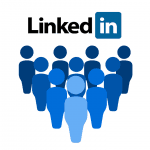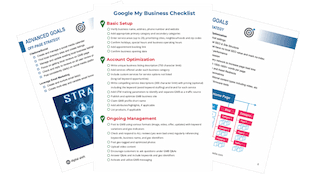What is LinkedIn Used For?
What is LinkedIn Used For & How Can It Benefit Me?
Have you ever tried searching what is LinkedIn used for? Chances are you are not alone! LinkedIn is the world’s largest professional social network, specifically designed for the business community. The website was co-founded by Reid Hoffman, Allen Blue, Jean-Luc Vaillant and Konstantin Guericke. In 2016 LinkedIn had just over 467 million professional members and continues to grow and expand.
co-founded by Reid Hoffman, Allen Blue, Jean-Luc Vaillant and Konstantin Guericke. In 2016 LinkedIn had just over 467 million professional members and continues to grow and expand.
The social networking website has two membership options available for anyone who wishes to sign up. The first option is the basic membership, which allows members to establish connections with different people they know. It can be people they have gone to school with, work with, or know from a different group they are a part of. The second type of membership is LinkedIn Premium.
Premium LinkedIn accounts are an investment!
The premium plans aren’t cheap and cost between $30 to $120 per month. LinkedIn premium accounts are not for everyone, and there’s nothing wrong with having a basic LinkedIn account. LinkedIn’s majority of premium users consist of job seekers, recruiters, and sales professionals. According to co-founder Reid Hoffman, approximately 27 percent of Linkedin subscribers are recruiters. If you decide you want to give premium a try, then you can, but if you decide it isn’t worth the investment then you can return to the basic free membership.
What is LinkedIn Used For?
The goal of the website is to help connect different business people of all ages and allow registered members to establish professional networking relationships. These networking relationships can be utilized for business purposes and help connect professionals with people they might not normally be able to find (owners, CFO’s, high-level executives).
Connect with professionals and prospect leads!
It’s also a fantastic resource because it encourages continued communication. If you have a meeting with a marketing manager from a firm and wish to contact him again to arrange a meeting you can use LinkedIn. Additionally, business owners can use LinkedIn to refresh their memories or learn more about a client they just recently had a meeting with for the first time. LinkedIn helps business professionals connect, reconnect, communicate, and develop valuable relationships crucial to a business’ success.
More LinkedIn Benefits
- establish a professional profile for yourself
- build and maintain your own personalized professional network
- find and reconnect with your colleges and classmates
- learn about other companies in your respective industry
- find other professionals in the same industry using LinkedIn’s groups
- share your thoughts using LinkedIn’s publishing platform
- discover new career opportunities searching for jobs on LinkedIn
How to Use LinkedIn?
Register And Create A Profile Page
The first step in using LinkedIn is creating your profile. In order to register you will need to provide your email address, name, location, current employer, and where you currently attend or attended school. You want your LinkedIn profile to read like a professional resume. Therefore, your focus should remain professional and consistent. For example, you should include employment and education history but avoid your favorite movies or hobbies.
Lead with value and speak to your audience!
There is also a section called “Summary” where you can provide a short description of yourself and whatever you deem relevant. It could include your business passions, education, or goals. Additionally, there are separate sections for education, work experience, skills and endorsements, languages, groups, news you follow, and certifications. There are also additional sections where you can further add to your profile to build your online profile.
LinkedIn Contacts
After completing your profile page, the next step is building your contact network. You’ll want to search for and connect with any business colleagues you already know, whether that is through social media, work, or outside involvement groups. LinkedIn provides numerous ways to search and find contacts. You can search for contacts by uploading your email contacts, colleague search, classmate search, name search, or the advanced search.
Each search method has its own benefits, but they all utilize information provided from your profile page in some way. Hence why it’s important to take your time when setting up your LinkedIn account. Once you upload or find your contacts with search queries, you can select which ones you wish to create a “connection” with. You can also use this moment to invite friends who are not on LinkedIn to join.
LinkedIn Connections
Finding your contacts is just the beginning. The real benefit of LinkedIn is creating your own powerful network of contacts and connections. In order to gain connections, you must invite desired members to join your network. These connections imply that you know the person well or that they’re a trusted business colleague.
Build connections and grow your network.
LinkedIn also encourages you to only connect with people you know or have met. In an effort to prevent you from inviting people you don’t actually know LinkedIn asks you to specify how you know the person you are inviting. Your answers are a colleague, classmate, business partner, friend, groups or association, or “I don’t know.” If you select “I don’t know” LinkedIn will not allow you to send the invitation.
Direct Connections
LinkedIn has rules and laws for contacting people within the social network. Anyone who has accepted your invitation to join their network is referred to as a “direct connection” or a “first-degree connection.” Since they are a first degree, direct connection you are free to contact them directly through email or messaging via their profile page. Any time you wish to contact second or third-degree connections (connections with people you know), you must use special LinkedIn tools called Introductions, InMail, or OpenMail.
Introductions, InMail, and OpenMail
Since you cannot directly message second and third-degree connections, you must use different tools on LinkedIn as a form of permission. The first option is “Introductions.” When using LinkedIn’s free account, you are provided with five introductions. If you want more, you have to upgrade to the premium account. These introductions work as a bridge, connecting you with the person you wish to connect with.
To send an introduction request, you must find a direct connection with the person you want to contact. Then you must send them your introduction message and ask them to forward it to said contact. If they decide to forward it and the desired contact accepts, you then have the option to send an invitation to join your network. At any point in the chain, your invitation can be blocked or denied by either your direct connection or the desired connection.
Send InMail directly to anyone.
The second option is using InMail. InMail is LinkedIn’s internal messaging system and allows you to directly contact anyone on the LinkedIn network without an introduction. Finally, the third option is to use OpenLink. OpenLink allows you to receive messages from anyone on the LinkedIn network. The advantage of OpenLink is that you can keep your email and other contact information private. The only downside to InMail and OpenLink is they are both only available to premium account holders who pay the monthly fee.



